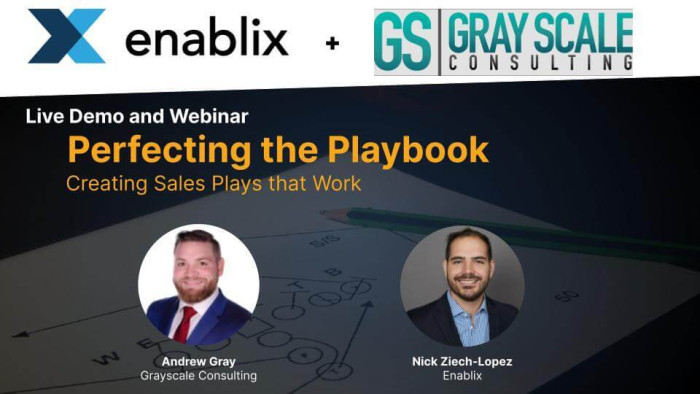Webinar Highlights: Perfecting the Playbook and Creating Sales Plays


Why are playbooks so difficult?
If you’ve ever struggled with creating sales plays or playbooks, you’re not alone. Turns out this issue might not be so much about how to make playbooks, but more about struggling to understand what they are. The term playbook can mean a lot of different things, so how do you master something you can’t fully understand? There doesn’t seem to be any one, strict definition of “playbook” and how to make one, but different sources have tried. For example, Hubspot released their free Sales Playbook Framework, and it’s over 40 pages long! So, with no singular, concise definition of what a playbook actually is, it makes it really hard to start. Even with all this confusion around playbooks, they are still demanded by revenue teams. Whenever there is a change like a product launch, new release, positioning changes– the revenue team starts asking for the playbook. But, what does that actually mean? In this webinar, Andrew Gray and Nick Ziech-Lopez discussed what playbooks are, and more importantly, what’s the best place to start. They shared a ton of great tips and insights from the industry to help you not only create effective playbooks, but understand what your team actually needs from them in order to be successful. Click below for all the material from this webinar, or keep reading for the highlights and key takeaways! Click Here For All Webinar Materials
The highlights
Don't Start with a playbook
Too many people set out to create an all-encompassing playbook, only to end up with a long 20 page document that no one will use. Nick highlights the need to start with the actual problem that you need to solve and create sales plays focusing on the tangible scenario that reps are in. Creating these plays is easier and more effective than starting with the full playbook. Focusing on scenarios and problems first will give you better plays– then as you start to see commonalities between plays, that’s when you can start to create those full playbooks for your team.
Benefits of an effective playbook
When executed well, there are 3 main things that plays and playbooks are going to give your organization:
- Alignment- If the plays and playbooks have been defined, everyone should be in agreement around what they’re doing and how they’re selling
- Positioning- Once the team is all selling in the same way, you can identify if the market is responding to your messaging and make changes accordingly
- Repeatability- With structures and playbooks in place, repeating this process and scaling you team becomes easier and more efficient
Identify your break even point
You’re going to get a lot of requests for playbooks and materials so it’s important to understand which of those requests are going to actually yield results. Nick highlights the importance of a breakeven point at which you realize that playbooks may not be worth the time to create. Failing to consider the ROI of your time will mean you end up spending time and energy creating playbooks that no one ever uses. Determine your breakeven point and know when the results and outputs are worth your time and effort.
Are sales plays just for the sales team?
Not necessarily. When creating sales plays, begin with your sales team and create effective plays and playbooks for them, but notice when they might apply to other teams too. Nick shows an example here of a “sales play” in Enablix for getting more G2 reviews for the customer success team. So as you are creating these plays and playbooks, you might notice opportunities that go beyond sales and include the entire revenue team. Questions? Comments? You can find Andrew and Nick on LinkedIn! Or check out all the playbook materials here!